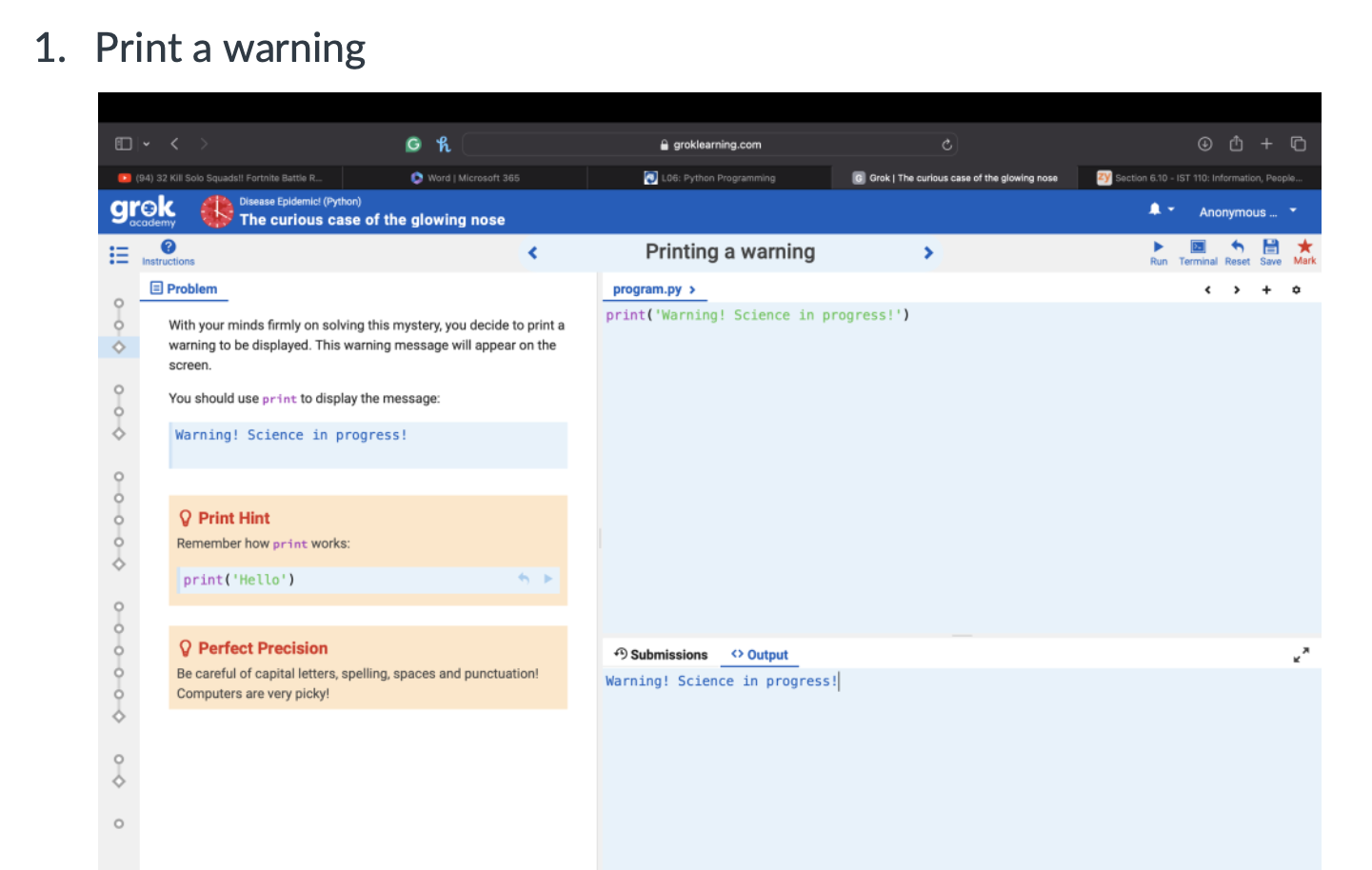L06: Programming Languages
Python Programming Assignment Instructions:
Learn to program in Python, a powerful language used by sites like YouTube and Dropbox. Complete the first 3 modules of the "Disease Epidemic" activity. The end of the third module is named "Rate of 'Green Glow' Spread". Click the link below and then select "Select Coding Now!"
Discussion - Programming Languages
My work:
Fundamental Differences:
Programming languages vary from machine code, the most basic form directly understood by computers, to high-level languages that resemble human language. Machine language is just binary code specific to each type of hardware. Assembly language adds a bit of readability by replacing binary with simple commands, but it's still close to the metal, requiring a good understanding of the computer's internals. High-level languages, like Python or Java, abstract away all the hardware details, focusing on what you want to achieve rather than how it's done at the hardware level. The key differences lie in syntax (from none in machine code to complex in high-level languages), abstraction (from none to high), and proximity to the hardware.
Abstraction Levels:
The abstraction level of a programming language influences how easy it is to code, read the code, and control the hardware. Machine language offers no abstraction; it's all about controlling every bit and registering directly, which is powerful but complex and challenging to read. Assembly language is a tiny step up, making code slightly more manageable but still quite involved and hardware-centric. High-level languages remove the need to think about hardware, making coding and reading code much easier, but at the cost of losing some control over the fine details of how the hardware is used. The higher the abstraction, the easier it is to work with the language, but you sacrifice some direct control over the machine.


